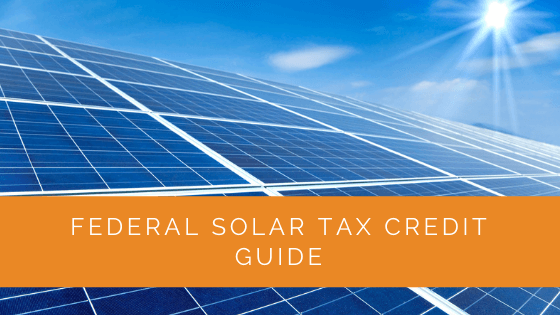One of the biggest incentives for installing a solar energy system is the Federal Solar Tax Credit. It is a project by the U.S. government to try and encourage Americans to use solar power, hence offering them tax credits for their systems.
Solar energy has lots of benefits, such as the fact that it is pollution-free, reduces the use of coal and other fossil fuels, and reduces one’s carbon print. However, there is a lot of confusion regarding the Federal Solar Tax Credit, as so many people are not aware of how it works and if they are eligible.
If you wonder what the solar tax credit is and its benefits, then read on. Below is our guide.
Contents
- 1 Key Takeaways
- 2 What Is the Federal Solar Tax Credit?
- 3 How Does the Federal Solar Tax Credit Work?
- 4 What Is the History of Federal Solar Tax Credit?
- 5 Who Is Eligible for the Federal Solar Tax Credit?
- 6 What Homes Qualify for Federal Solar Tax Credit?
- 7 What Energy-saving Equipment That Qualifies for Federal Solar Tax Credit?
- 8 How Do You Claim the Federal Solar Tax Credit?
- 9 How Do You File Form 5695 with Your 1040 Individual Tax Return?
- 10 Case Study: Residential Solar Panel Installation in Suburban Neighborhood
- 11 Expert Insights From Our Solar Panel Installers About Federal Solar Tax Credit
- 12 Experience Solar Excellence with Us!
- 13 Conclusion
Key Takeaways
- The Federal Solar Tax Credit, or the Investment Tax Credit (ITC), permits customers to deduct 30% of the total costs of installing a complete solar system from their federal tax bill. This rate applies to installations between 2022 and 2032, reducing to 26% for systems installed in 2033 and 22% in 2034, as extended by the Inflation Reduction Act of 2022.
- To be eligible for the Federal Solar Tax Credit, you must meet specific requirements, including being a homeowner, owning the solar system, and having enough personal income tax and federal tax liability to apply. Various energy-saving equipment and home types qualify for the credit, and careful record-keeping is essential when claiming it using IRS Form 5695.
What Is the Federal Solar Tax Credit?
The Federal Solar Tax Credit is a credit you receive when filing your annual tax return. It is also known as Investment Tax Credit. It allows customers to deduct up to 30% of what was incurred in installing a complete solar system from their federal tax bill.
For example, if you purchase a solar system and have it installed on your property for use in your home or business, then a percentage of the system cost will be reduced from your tax burden.

How Does the Federal Solar Tax Credit Work?
The Federal Solar Tax Credit qualifies you for a credit of up to 30% of the total costs incurred. However, this percentage depends on when you installed the equipment. For example;
- 30% for systems installed between 2022 and 2032
- 26% for systems installed in 2033
- 22% for systems installed in 2034
This credit covers the costs of equipment, permits, and installation. Notably, the tax credit will phase down starting in 2033.
What Is the History of Federal Solar Tax Credit?
The Federal Solar Tax Credit was first offered through the Energy Policy Act of 2005 to expand the U.S. renewable energy market. It is a percentage of the total qualified and incurred costs of installing a solar energy system. The most recent extension was due to the Inflation Reduction Act signed in 2022, which extended the tax credit timeline and increased the credit percentage.
Who Is Eligible for the Federal Solar Tax Credit?
For you to be eligible, you should meet the following requirements:
- The system should be installed and in service after January 1st, 2006, and before December 31st, 2034
- Homeownership of the solar system
- Sufficient personal income tax and federal tax liability

What Homes Qualify for Federal Solar Tax Credit?
The following homes qualify for Federal Solar Tax Credit:
- House
- Condominium
- Mobile home
- Houseboat
- Cooperative apartment
- Off-site community solar projects
What Energy-saving Equipment That Qualifies for Federal Solar Tax Credit?
The following types of energy-saving equipment qualify for Federal Solar Tax Credit:
- Solar power storage equipment with a capacity rating of 3 kilowatt-hours or more
- Solar powered units
- Small wind turbines
- Solar-electric collecting roofs
- Fuel cell property
How Do You Claim the Federal Solar Tax Credit?
When claiming your federal solar tax credit, it is crucial to know every cost incurred in the final system cost. This is where receipts come in handy. You will need a record of every transaction made, as a paper trail will be required before you get your hands on the money. The more you spend on your project, then the more significant your credit.
Below are some of the expenses that you are allowed to claim:
- Electrician fees
- Solar equipment cost
- Freight shipping costs
- Professional installer fees
- Engineer fees
- Solar consulting fees
- Tools used, whether bought or rented
- Permitting fees
- Equipment rented or purchased, such as scaffolding
- Permitting service costs
- Any miscellaneous solar costs
The costs and fees will vary with every person since everyone purchases and installs their systems differently. It is crucial to note that if you decide to go the DIY route and install the system yourself, you will not claim labor cost on the tax credit.

How Do You File Form 5695 with Your 1040 Individual Tax Return?
You will need to prove to the government that you spent the money to claim your solar tax credit. This is where IRS Form 5695 comes in for residential energy credit. In case you are unsure of something, ensure that you consult with your tax accountant.
The steps for filing include:
- Have all your receipts ready and in a safe place.
- Ensure that you are eligible for the tax credit with the requirements mentioned above. They include owning the system and owing income tax to the government.
- Complete the IRS Form 5695. Focus online 1, which is for solar electricity. Put all your total energy costs into line 1. Once this is done, add lines 1 through 4 and put the total in line 5. After that, multiply line 5 by the percentage, for example, 26%, and enter the result into line 6. This amount is the tax credit.
- Add your credit information to your 1040 form. With these simple steps, you will be done filing!
Case Study: Residential Solar Panel Installation in Suburban Neighborhood
Background
At Solar Panels Network USA, we recently completed a residential solar panel installation in a suburban neighborhood. This project was motivated by the homeowner’s desire to leverage the Federal Solar Tax Credit to offset installation costs while promoting sustainable living.
Project Overview
The homeowner sought to install a comprehensive solar energy system to reduce their carbon footprint and achieve significant savings on their energy bills. The primary goal was to utilize the Federal Solar Tax Credit, which allows for a deduction of 30% of the total installation costs from federal taxes.
Implementation
The project began with an initial consultation to understand the homeowner’s energy needs and preferences. A thorough site assessment was conducted to determine the optimal placement and configuration of the solar panels, ensuring maximum efficiency.
Key steps included:
- Initial Consultation and Planning: Detailed discussions were held with the homeowner to outline the project scope and financial benefits of the Federal Solar Tax Credit.
- Site Assessment and Design: Advanced tools were used to map the roof space, optimizing the placement of solar panels for maximum exposure to sunlight.
- Installation: Our skilled team installed high-efficiency solar panels, ensuring all components were seamlessly integrated with the existing electrical infrastructure.
- System Integration: The solar energy system was connected to the grid, allowing the homeowner to benefit from net metering and the Federal Solar Tax Credit.
Results
The installed solar energy system led to significant energy savings and a reduction in the homeowner’s carbon footprint. The system’s performance exceeded expectations, resulting in lower monthly energy bills and a swift return on investment.
- Energy Savings: The homeowner experienced a reduction of approximately 70% in their monthly energy costs.
- Environmental Impact: The solar panel system significantly decreased the household’s carbon emissions, contributing to environmental sustainability.
- Financial Benefits: By utilizing the Federal Solar Tax Credit, the homeowner saved 30% on the total installation costs, which translated into substantial financial savings.
Summary
This case study illustrates how Solar Panels Network USA effectively leverages the Federal Solar Tax Credit to deliver substantial financial and environmental benefits to homeowners. By providing expert consultation, precise installation, and comprehensive support, we ensure our clients maximize their investment in solar energy. Our commitment to quality and sustainability drives us to support homeowners in their journey towards renewable energy adoption.
Expert Insights From Our Solar Panel Installers About Federal Solar Tax Credit
The Federal Solar Tax Credit is a tremendous incentive for homeowners considering solar energy. It significantly reduces the initial financial burden, making solar installation more accessible and financially feasible.
Senior Solar Installer
Understanding the eligibility requirements for the Federal Solar Tax Credit can be complex, but it’s worth the effort. This credit not only helps with upfront costs but also offers long-term savings on energy bills.
Lead Solar Technician
Our clients are often amazed by the savings they achieve through the Federal Solar Tax Credit. It’s a pivotal factor in the decision to switch to solar, underscoring the government’s commitment to renewable energy.
Chief Installation Engineer
Experience Solar Excellence with Us!
Trust in Solar Panels Network USA, where our seasoned experts deliver top-quality solar solutions for homes and businesses nationwide. With a legacy of countless successful installations and a commitment to sustainable energy, we’re your reliable partner in the solar journey. Ready for a brighter, eco-friendly future? Call us now at (855) 427-0058 and harness the power of the sun!
Conclusion
With the solar tax credit expiring soon, it is essential not to waste time. Get a quote from your solar panel installer as quickly as possible to be eligible for Federal Solar Tax Credit.
If there are some things you are unsure of, seek a professional’s help to navigate the process. They will help you get through it and file your credit tax effectively.
About the Author
Solar Panels Network USA stands at the forefront of solar energy solutions, driven by a team of seasoned solar engineers and energy consultants. With over decades of experience in delivering high-quality solar installations and maintenance, we are committed to promoting sustainable energy through customer-centric, tailored solutions. Our articles reflect this commitment, crafted collaboratively by experts to provide accurate, up-to-date insights into solar technology, ensuring our readers are well-informed and empowered in their solar energy decisions.


